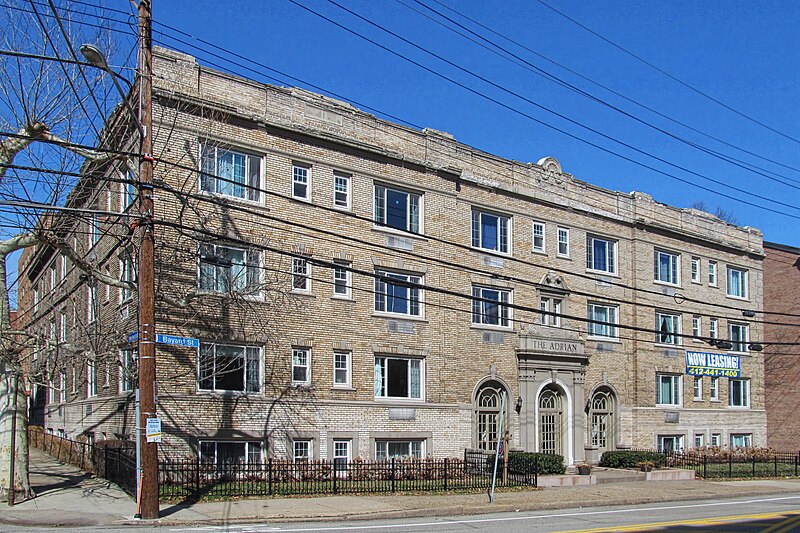
Blooming today in Polish Hill.

An out-of-towner might think that some horrible territorial war had happened to make Beechview residents throw a concrete wall right across the middle of Sebring Avenue. But the culprit is topography again. The streets in Beechview are laid out in a grid in defiance of the hills, and the only way to make Sebring Avenue intersect Westfield Street was with terracing.

We’ve seen terraces like these on the South Side Slopes, and here is a similar construction for a similar reason in Beechview. As you might guess from the parked cars, the street is two ways on both sides of the divide, which only adds to the delightful confusion. You can turn any which way from Sebring Avenue. The only thing you can’t do is continue on Sebring Avenue.


Beechview’s streets are laid out in a grid. The topography rebels against grids, so streets are often interrupted for a block by stairways—as we see here on Andick Way. This is a very common phenomenon in Pittsburgh neighborhoods. The stairways appeared on published maps as streets, and in the early days of GPS that made navigation hazardous. Today most GPS systems have figured out which blocks are impassible to motor vehicles.

A roundup of spring flowers blooming yesterday. Above, a purple crocus. Below, a yellow crocus.







This view of the west side of Broadway in Beechview shows us a very Pittsburghish commercial district. The architecture is miscellaneous, including apartment buildings, commercial buildings, houses with storefront extensions, and tiny one-storey gap-filler storefronts. The street curves, so the buildings are not all perfectly rectangular. And of course this is Pittsburgh, so the whole row is on what in other cities would be called a steep slope, though in Pittsburgh we expect the Red Line streetcars to negotiate it.

A good apartment-building design makes its residents feel better off than they are. Here you can imagine yourself walking into a stately English home by Robert Adam, even if your portion of it is only a studio apartment.


We looked at the Church of the Ascension a little while ago. Here is a view of the entire south side of it that took twelve individual photographs to capture. That is the kind of effort old Pa Pitt is willing to put into documenting his city’s architecture for you, his beloved readers. The whole picture is nearly 11 megabytes, so don’t click or tap on it if you’re on a metered connection.